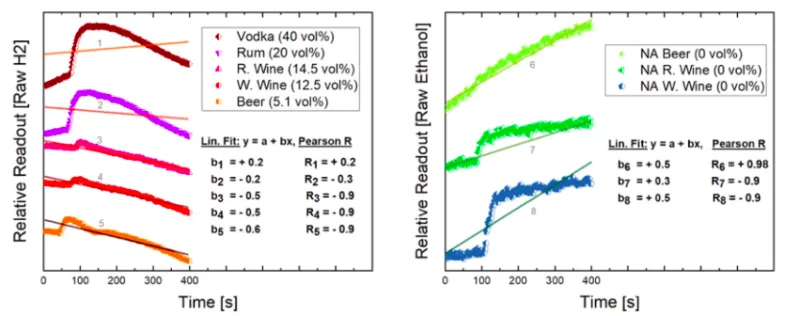Gastroretentive Electronics for Long-Term, Continuous, and Real-Time Monitoring of Alcohol Intake
A wireless, long-term monitoring system to quantitatively sense ingested alcohol in the gastrointestinal (GI) tract before it has been metabolized by the body. This oral pill can be used for the treatment of alcohol use disorder.
Researchers
-
gastroretentive articles for alcohol sensing
United States of America | Granted | 12,138,034 -
gastroretentive articles for alcohol sensing
United States of America | Granted | 11,850,034
Figures
Technology
The novel invention provides long-term, real-time, and continuous monitoring of ingested alcohol levels in subjects via a sensor placed directly in the GI tract. Each device contains a semiconductor gas sensor designed to detect volatile organic compounds with particular sensitivity to ethanol, allowing it to measure actual amounts of alcohol ingested. The device includes a filter membrane that is only permeable to alcohol vapor and protects the electronics from the surrounding gastric fluids. The sensor wirelessly communicates its measurements through a Bluetooth connection to an external receiver. The technology can be delivered orally in a capsule form, or alternatively through a nasogastric tube to the stomach, and then remains in the GI tract after undergoing an expanding shape change (either unfolding, swelling, or both). Proof of concept devices have been tested in vivo for ethanol detection using a porcine animal model system. Thus, it can provide long-term, accurate alcohol intake measurements by monitoring the alcohol itself in the GI tract, not just the secondary information from metabolized alcohol.
Problem Addressed
There is currently a lack of accurate and readily available devices to quantitatively monitor alcohol intake and frequency among the millions of Americans with alcohol use disorder. While a few can provide point-of-care alcohol intake monitoring (e.g., transdermal and breath alcohol sensors), these options only measure secondary information from metabolized alcohol, and are thus limited in their ability to accurately provide real-time quantitative measurements to support effective and continuous therapeutic intervention.
Advantages
-
Provides quantitative, real-time measurements of actual ingested alcohol levels as opposed to secondary metabolite levels calculated by competitor transdermal and breath alcohol devices
-
Establishes long-term residence in the GI tract to continuously monitor alcohol intake over extended periods of time (at least 24 hours)
License this technology
Interested in this technology? Connect with our experienced licensing team to initiate the process.
Sign up for technology updates
Sign up now to receive the latest updates on cutting-edge technologies and innovations.

